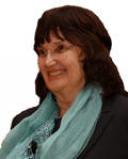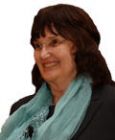Race and Ethnicity
Racial Unrest in 1963 and 2014: What Have We Learned
“Those who cannot remember the past are condemned to repeat it." (George Santaya
Posted November 28, 2014
Studies at Harvard have shown that most people prefer people that look similar to themselves (Highfield, The Telegraph, http://www.telegraph.co.uk/science/science-news/3336375/We-prefer-peopl…). There is a part of our brain, "medial prefrontal cortex" (MPFC), that takes similar traits and generalizes the similarity to the whole person. In like fashion, that part of the brain can generalize that a person that does not look like us is not similar to us in many ways, including thoughts and attitudes. As the world becomes more globalized, this part of the brain may make an initial judgment about someone that looks different from themselves. It is though interaction that the initial impression becomes more accurate and contextualized.
The movement toward racial integration and equality has been a long and hard one for many. It is a societal evolution allowing us to gain mutual benefit from the interaction of those that appear to be different than ourselves. We must learn from our past experiences to continue the development of our culture toward a more advanced society of respect for all by getting to know those that, at first glance appear to be different from ourselves.
My story begins with my experiences during the civil rights movement in the 1960’s. I was born in 1946 in Cambridge, MD, a town most people have never heard of Cambridge was very segregated 50 years ago. Although difficult to imagine today, in the 50’s and 60’s, African Americans lived in one part of Cambridge and whites in another. Race Street (appropriately named) divided the white and black sections of the town. Isolation from each other and from outside influences sustained a way of living that was slow to change.
The building of the Chesapeake Bay Bridge to connect the rural Eastern Shore to the more urban Western Shore in the 1950s probably helped drive many new changes on the Eastern Shore of Maryland, including integration. However, change was slow and filled with conflict.
I remember seeing the National Guard in battle gear and guns with bayonets on their shoulders, stationed on every corner of Race Street, from 1963 through 1964. It is jarring to your heart to see the militarization of your town. My mother had three teenaged daughters still living at home. I was home from college for the summer. The family of overly protected girls was terrified. I remember my mother telling my sisters to crouch down in the floorboards of our 1950 Plymouth so we would not be hit by a stray bullet. It was my job to see that they stayed down until we were far away from danger. That experience certainly cultivated an early global belief that those that lived in the black community could be volatile and dangerous.
Many in the white majority believed that their civil rights were being trampled by efforts of the US government to supersede states’ rights to hire and serve in public establishments whomever they chose to hire or serve (http://www.npr.org/templates/story/story.php?storyId=12420016). They had deeply held beliefs going back generations of the lack of work skills and lawlessness of the black population which ignored the realities of actual numbers of lack of job skills and criminality in both black and white communities.
From the door of my father’s shop, I saw a local business man crack raw eggs on the heads of African American protesters who were kneeled in front of his restaurant next door. We were living in a culture that needed to change, but integration was very foreign to us. Again, this is not an excuse but a statement about how difficult it can be to change generations of a particular attitude or way of living. Therefore, change was slow to come and painful for all, but it did come.
Any time you upset the existing power structure, there will be conflict. One group pushing to make change happen and another group trying to keep the status quo. To be clear, such upheavals also change the economic status quo, which few are willing to let go of without a fight. There were non-violent protests and violence side by side, as there is in Ferguson today. The violent protests reinforced the stereotypes of the lawlessness in the black communities held by many whites. Only when the violence widespread violence subsided was dialogue leading to change possible.
In July of 1964 Congress passed the civil rights act ending overt discrimination in the US, but that was not the end of our struggles in Cambridge. However, the militaristic stance of the white and black leaders continued to fuel the racial unrest and conflict. Unfortunately, two previously moderate leaders, H. Rap Brown, an activist in the civil rights movement, and Spiro Agnew, then Governor of Maryland, clashed and escalated the rhetoric in fiery terms, as well (http://web.stanford.edu/~ccarson/articles/cambridge_convergence.htm). Therefore, little progress was made at that time when it came to increased communication and equality for all.
H. Rap Brown, entered Cambridge, in the hot summer of 1967 (http://web.stanford.edu/~ccarson/articles/cambridge_convergence.htm). Very soon after an impassioned speech given by Brown, an elementary school and 20 other nearby buildings burned to the ground. There were also reports of random shootings. Rap Brown was blamed for the fires, but the investigation at that time was limited and hate rhetoric was high.
Rap Brown was arrested for setting the fires in Cambridge, however, later, the Kerner Commission examined the events in Cambridge and placed the blame of the 1967 unrest at the feet of decades of racial discrimination by a white power structure in Cambridge (http://www.npr.org/templates/story/story.php?storyId=12420016).
In the 60’s Robert F. Kennedy intervened and encouraged dialogue in Cambridge. Eventually change did come; too slow for some and too fast for others. Today, it is a great town with wonderful people of all ethnic backgrounds who communicate and work together. It is not perfect, I am sure, but it is much better.
All of this has come flooding back to me as I watched the events unfold in Ferguson. The events in Cambridge happened 50+ years ago. There are at least two lessons for me in these 2 events. We have certainly made a lot of progress in this country in race relations, but we still have a long way to go. Justice must prevail and will, perhaps in some part, because of the national scrutiny of this situation, but also because we can learn from past experiences.
Eventually, things will change, even in Ferguson, but how long will people wait for equality? How fast can people change life-long held ideas and beliefs? Does open conflict and escalation speed up the process of change or slow it down? Is the open conflict a necessary part of the change? From the history of Cambridge, we can learn that the militarization and escalation of the situation on both sides only postponed the solving of the problem. We know we must talk to one another on a regular basis and get to know each other to overcome our brain’s initial impression and to solve mutual problems. Ministers, police, media, political figures, and civic minded community people have worked hard to settle down the level of rhetoric and conflict in Ferguson. Now is the time for dialogue and problem solving. It is OK for us to disagree, but we must respectfully disagree and dialogue to solve problems that hurt all of us.




